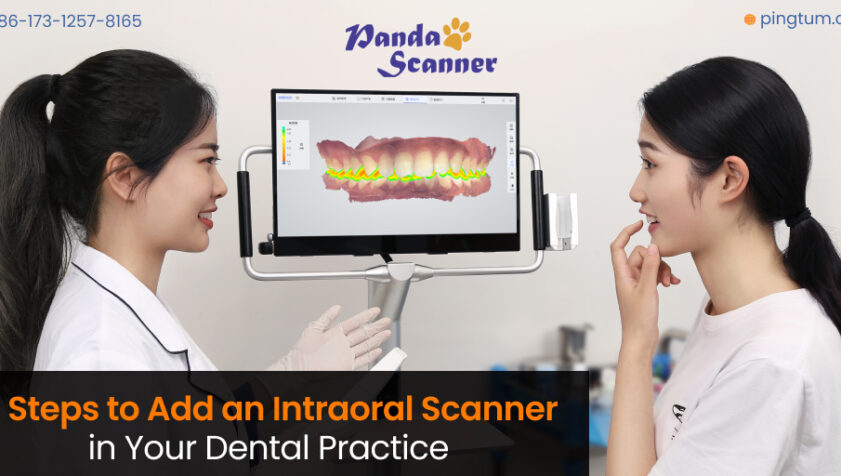The intraoral scanner for dentistry is a remarkable invention as it has completely revolutionised the process of dental scanning required in many areas of dentistry. Therefore, many dentists are investing in these scanners and incorporating them into their dental practice. A good quality intraoral scanner puts dentists at an advantageous point with benefits like precise diagnosis, and treatment, fast procedure, patient comfort and other advantages. Unlike the traditional impression system, which involved obtaining oral impressions with the help of alginate materials, digital dentistry procures impressions by projecting light into the oral cavity. Now, for this and more reasons, intraoral scanners are becoming both dentists’ and patients’ favourites. So, incorporating these intraoral scanners in your dental practice can be a great decision.
Now, here is a guide for you to know the steps that can help you to incorporate an intraoral scanner in your dental practice properly. So, take a look.

Top Steps to Add a Panda Intraoral Scanner in Your Dental Practice
Switching to digital dentistry must be a gradual process as it involves understanding and learning. Doing it hurriedly can leave scope for risks and mistakes. Here are some steps that you can follow to incorporate Panda intraoral scanners in a great way.
Select an application
Start with selecting an application that adds value to your business. Now, choose a product or a workflow that is inefficient, unreliable and expensive. In your dental clinic to reduce required procedural time and cost, you can install an in-house Panda intraoral scanner. Using these scanners, you can do many treatments such as guided surgery. So, it would be best if you choose one product or workflow and start with a single-use case. Thereafter, you can use the scanner for other applications and multiple applications.
When an intraoral scanner is installed in a clinic it can offer a better patient experience, and also improved efficiency, cost savings, and time. Also, it will help dentists to achieve accuracy in treatment, and deliver high-quality scanning results.
Define your digital workflow
With a particular application, first, accomplish a step-by-step digital workflow, and get a good idea about what is required for scanning and creating. Now, understand whether investing in an intraoral scanner would be fruitful for you or if it is best to stick to the old physical impression method. A proper demonstration of the scanner and how it can operate to help you in conducting the procedure step-by-step would be the best way to understand how you can place it in your clinical workflow.
First, learn then expand the use
During the trial or demonstration phase get a good idea about the workflow, learn from the steps and clear your doubts timely (if any). After you gain adequate knowledge and become comfortable with the result, you can consider switching to a completely digital workflow and connecting with the laboratory. When you follow all the steps properly connecting new equipment with dental workflow should not be a big issue since it can generate good ROI for a long-time. By integrating an intraoral scanner in your clinic, you will find that even by starting small, you are receiving quick ROI.
Clinic and lab workflow
To get an implant done in traditional dentistry, the patient is first required to give a physical impression of their oral cavity. After the moulds become solid and dry, they are sent to a dental laboratory by the dentist where the crown or other restoration solution is crafted. With the help of intraoral scanners such as Panda intraoral scanners as we have explained before the patient does not need to wait with the gummy material in the mouth to give the impression, and the procedure involved takes a negligible amount of time to send the impression to the lab where the impressions are created based on the virtual 3D printing.
Conclusion
Dentists who are yet to incorporate intraoral scanners with their dental practice in future will fall behind in the competition. This is because, patients seek comfortable, convenient, fast and reliable diagnosis and treatment. Since digital dentistry offers all these benefits, patients are visiting dentists who are incorporating intraoral scanners in their dental practices more. So, traditional dentistry is fading away. If you are a dentist who has not yet integrated an intraoral scanner with your dental practices, then know it is high time you consider it.






